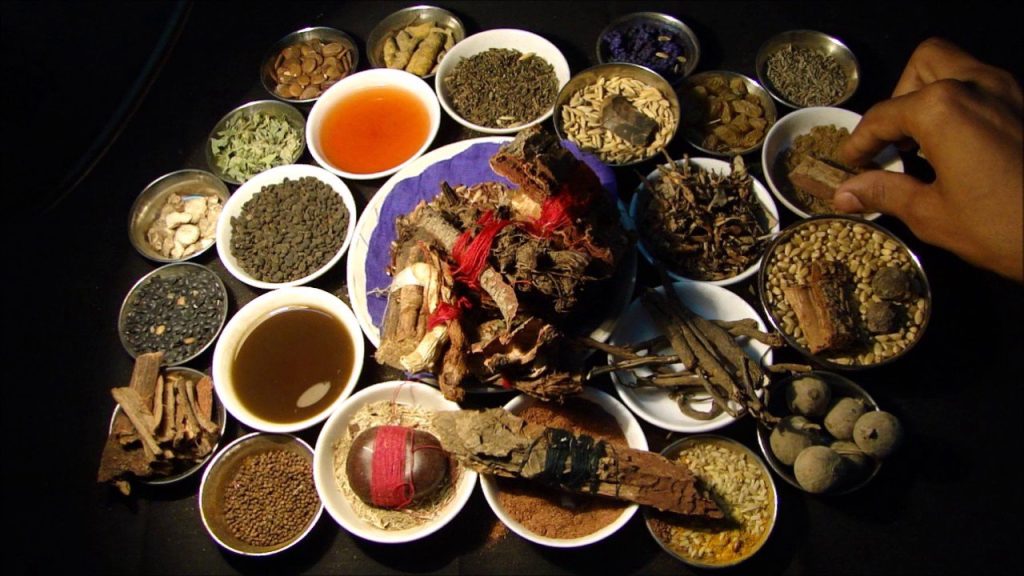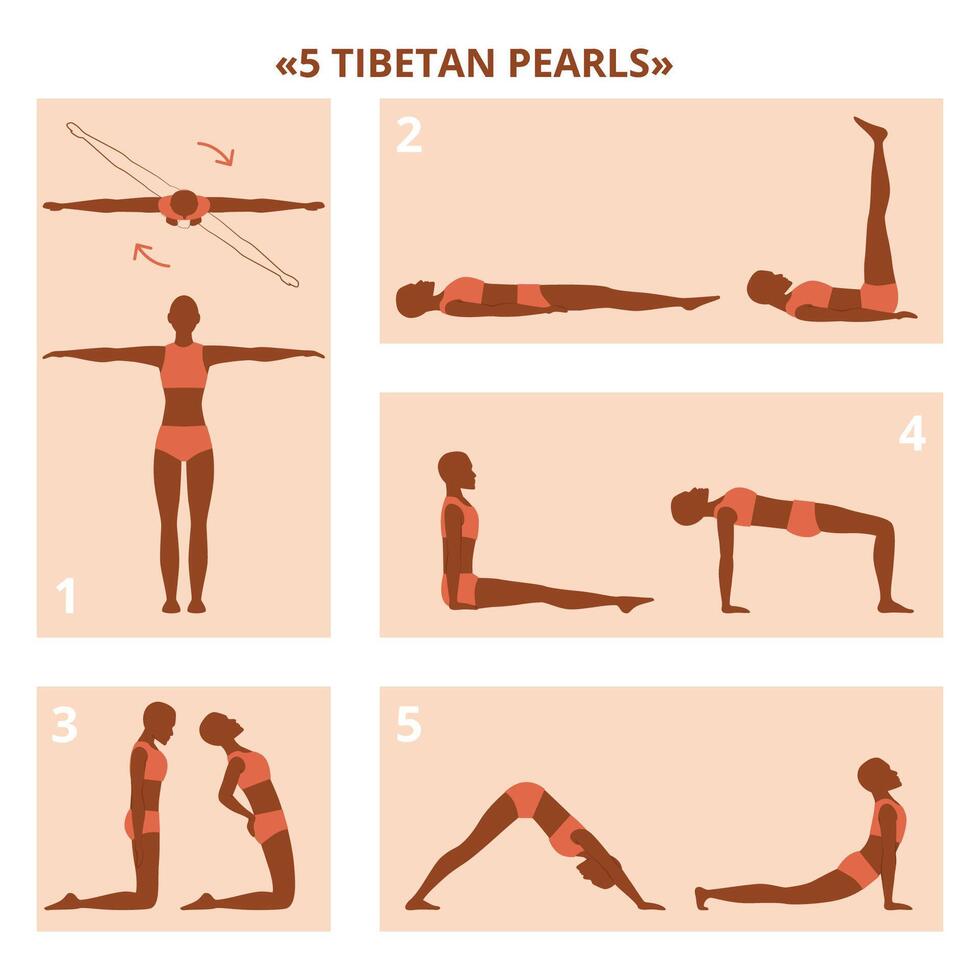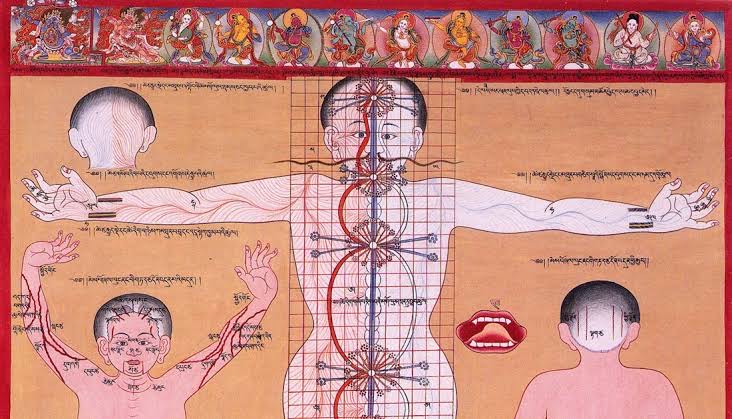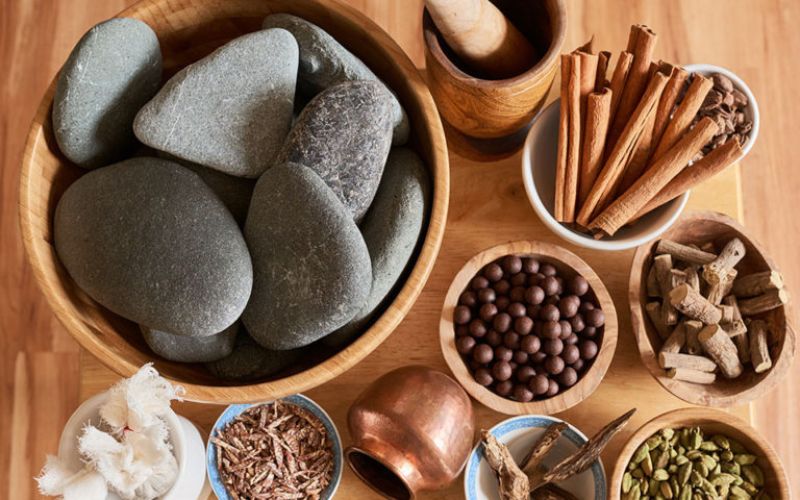Tibetan medicine and yoga offer holistic approaches to cultivating inner peace by harmonizing the body, mind, and spirit. Rooted in ancient Tibetan Buddhist traditions, these practices emphasize balance, mindfulness, and connection to the natural world. Below is a comprehensive guide to incorporating Tibetan medicine and yoga into your daily practice for inner calm and well-being.
Tibetan Medicine for Inner Peace
Tibetan medicine, known as Sowa Rigpa (“Science of Healing”), is a 2,500-year-old system that integrates physical, mental, and spiritual health. It views inner peace as a state of balance among the body’s three humors (nyepa): Lung (wind), Tripa (bile), and Beken (phlegm). Imbalances in these humors can lead to stress, anxiety, or restlessness. Below are key practices to foster inner peace:
1. Dietary Balance
Tibetan medicine emphasizes diet as a cornerstone of mental and physical harmony. Foods are classified by their energetic qualities (warming, cooling, or neutral) to balance the humors.
- For Lung (wind) imbalance (symptoms: anxiety, insomnia, restlessness):
- Favor warm, nourishing foods like soups, stews, root vegetables, and cooked grains (e.g., barley or quinoa).
- Avoid raw, cold, or bitter foods like salads or caffeine, which can aggravate Lung.
- For Tripa (bile) imbalance (symptoms: anger, irritability):
- Choose cooling foods like cucumber, yogurt, leafy greens, and sweet fruits.
- Avoid spicy, oily, or acidic foods like chili, fried foods, or alcohol.
- For Beken (phlegm) imbalance (symptoms: lethargy, mental fog):
- Opt for light, warm, and spicy foods like ginger tea, lentils, or roasted vegetables.
- Limit heavy, oily, or sweet foods like dairy or processed snacks.
Practice: Keep a food journal for a week to identify how different foods affect your mood and energy. Adjust your diet to include more balancing foods based on your symptoms.
2. Herbal Remedies

Tibetan medicine uses herbal formulas to calm the mind and restore balance. Common herbs for inner peace include:
- Saffron: Calms Lung and soothes anxiety.
- Nutmeg: Promotes relaxation and better sleep.
- Sandalwood: Cools Tripa and reduces irritability.
Practice: Consult a qualified Tibetan medicine practitioner to receive a personalized herbal formula. Alternatively, drink a simple calming tea made from chamomile or saffron (1 pinch of saffron in warm water, steeped for 5 minutes) in the evening.
3. Mindfulness and Meditation
Tibetan medicine integrates meditation to balance the mind and cultivate inner peace. A key practice is Shamatha (calm-abiding meditation), which focuses on stabilizing the mind.
- How to Practice Shamatha:
- Sit in a comfortable cross-legged position or on a chair with a straight spine.
- Focus on your breath, observing the natural inhale and exhale without forcing it.
- When thoughts arise, gently acknowledge them and return to the breath.
- Practice for 10–15 minutes daily, gradually increasing the duration.
Practice: Dedicate a quiet space for daily meditation. Use a timer to maintain consistency and track progress in a journal.
4. Lifestyle Adjustments
Tibetan medicine emphasizes aligning daily routines with natural rhythms to reduce stress.
- Sleep: Aim for 7–8 hours of sleep, ideally between 10 PM and 6 AM, to calm Lung.
- Movement: Engage in gentle activities like walking or yoga to balance energy.
- Environment: Create a peaceful home environment with warm lighting, minimal clutter, and calming scents like sandalwood or lavender.
Practice: Set a daily schedule that includes fixed times for meals, sleep, and relaxation to stabilize Lung and promote mental clarity.
Yoga Practices for Inner Peace

Tibetan yoga, such as Tsa Lung (channel and wind practices) and Trul Khor (Tibetan yoga of movement), complements Tibetan medicine by channeling energy (lung) to calm the mind and body. Below are accessible yoga practices inspired by Tibetan traditions to cultivate inner peace:
1. Tsa Lung Breathing
Tsa Lung focuses on breathwork to clear energy blockages and promote mental calm.
- Practice: Nine-Breath Purification:
- Sit comfortably with a straight spine.
- Inhale deeply through the right nostril (close the left nostril with your thumb), imagining white light cleansing the body.
- Exhale fully, releasing negativity as dark smoke.
- Repeat three times for the right nostril, three for the left, and three through both nostrils.
- Visualize your mind becoming clearer with each breath.
Frequency: Practice daily for 5–10 minutes, ideally in the morning.
2. Trul Khor Movements
Trul Khor involves dynamic movements synchronized with breath to release tension and balance energy.
- Simple Practice: Arm Swings:
- Stand with feet shoulder-width apart.
- Inhale, raising arms overhead, stretching upward.
- Exhale, swinging arms down and behind you, gently twisting the torso.
- Repeat for 5–7 cycles, coordinating breath with movement.
Frequency: Perform 3–5 minutes daily to release physical and mental tension.
3. Restorative Yoga Poses
Incorporate restorative yoga poses inspired by Tibetan principles to relax the body and mind.
- Child’s Pose (Balasana):
- Kneel on the floor, sitting back on your heels.
- Fold forward, resting your forehead on the ground and arms by your sides.
- Breathe deeply for 2–3 minutes, focusing on releasing tension.
- Corpse Pose (Savasana):
- Lie flat on your back with arms and legs relaxed.
- Close your eyes and focus on slow, deep breaths for 5–10 minutes.
- Visualize a peaceful scene, like a Tibetan mountain landscape.
Frequency: Practice these poses for 10–15 minutes daily, ideally before bed.
4. Mantra Recitation

Tibetan yoga often includes mantra recitation to focus the mind and invoke peace.
- Mantra: Recite “Om Mani Padme Hum” (the mantra of compassion) 108 times daily using a mala (prayer beads).
- How to Practice:
- Sit comfortably and hold the mala in your right hand.
- Chant the mantra softly with each bead, focusing on its sound and meaning.
- Complete one round (108 repetitions) in a single sitting.
Frequency: Practice daily, preferably in the morning or evening.
Integrating Tibetan Medicine and Yoga into Daily Life

To create a sustainable practice for inner peace:
- Start Small: Begin with one Tibetan medicine practice (e.g., dietary adjustments) and one yoga practice (e.g., Nine-Breath Purification) for 10 minutes daily.
- Create a Routine: Dedicate a specific time each day for meditation, yoga, or mindful eating.
- Seek Guidance: Consult a Tibetan medicine practitioner or qualified yoga teacher for personalized advice, especially for herbal remedies or advanced Tsa Lung practices.
- Track Progress: Use a journal to note changes in mood, energy, and sleep after implementing these practices.
Additional Resources
- Books:
- The Tibetan Book of Health by Nida Chenagtsang (for Tibetan medicine principles).
- Tibetan Yoga and Secret Doctrines by W.Y. Evans-Wentz (for Trul Khor and meditation).
- Apps: Use apps like Insight Timer for guided Shamatha meditation or mala tracking.
- Practitioners: Search for certified Sowa Rigpa practitioners through organizations like the International Academy for Traditional Tibetan Medicine (IATTM).
By combining the wisdom of Tibetan medicine with the embodied practices of yoga, you can cultivate a deep sense of inner peace that resonates through your body, mind, and spirit.
- Airport pickup and transfer to retreat center
- Welcome herbal tea and orientation session
- Overnight: Wellness retreat center
- Pulse and energy diagnosis by Tibetan doctor
- Morning yoga and breathing practice
- Herbal treatment or massage
- Overnight: Retreat center
- Guided meditation session
- Tibetan herbal steam therapy or cupping
- Evening mantra chanting for emotional balance
- Overnight: Retreat center
Sunrise yoga and mindfulness walk
Chakra alignment or energy healing session
Group sharing circle
Overnight: Retreat center
- Final yoga & reflection
- Departure transfer to airport
- Tour ends



